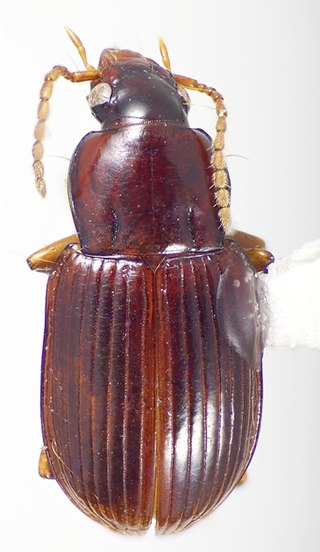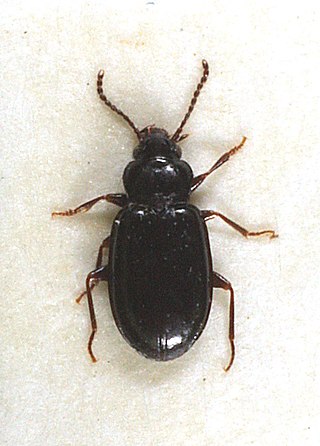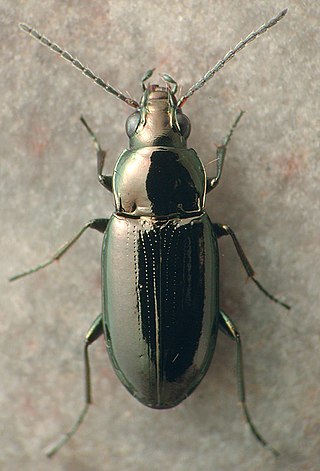
Ground beetles are a large, cosmopolitan family of beetles, the Carabidae, with more than 40,000 species worldwide, around 2,000 of which are found in North America and 2,700 in Europe. As of 2015, it is one of the 10 most species-rich animal families. They belong to the Adephaga. Members of the family are primarily carnivorous, but some members are phytophagous or omnivorous.

Calathus is a genus of ground beetle native to the Palearctic, the Near East and North Africa. There are at least 190 described species in Calathus.
Eucaerus is a genus of ground beetles in the family Carabidae. There are about seven described species in Eucaerus, found in North, Central, and South America.
Altagonum is a genus of beetles in the family Carabidae, containing the following species:
Ponapagonum is a genus of beetles in the family Carabidae, containing the following species:

Psydrinae is a subfamily of beetles in the family Carabidae.

Tiferonia is a genus of beetle in the family Carabidae first described by Philip Jackson Darlington Jr. in 1962.
Halocoryza is a genus of beetles in the family Carabidae, containing the following species:

Tachyta is a genus of ground beetles in the family Carabidae. There are more than 30 described species in Tachyta.
Halocoryza arenaria is a species of brown coloured ground beetle in the subfamily Scaritinae which was described by Darlington in 1939.

Ross Taylor Bell was an American entomologist with particular interest in the invertebrate natural history of Vermont, United States, and carabid beetles. Together with his wife, Joyce Bell, his work at the University of Vermont was largely taxonomic, where they described more than 75% of the rhysodine species known to science. Ross also wrote a number of seminal papers in his chosen field.
Bembidion sejunctum is a species of beetle in the family Carabidae. It is found on Saint Pierre and Miquelon and Magdalen Islands as well as in Canada and the United States.
Bembidion salebratum is a species of beetle in the family Carabidae. It is found in Canada and the United States.

Bembidion nitidum is a species of beetle in the family Carabidae. It is found in Canada and the United States.

Cicindela depressula, the dispirited tiger beetle, is a species of flashy tiger beetle in the family Carabidae. It is found in North America.

Ellipsoptera cuprascens, the coppery tiger beetle, is a species of flashy tiger beetle in the family Carabidae. It is found in North America.
Sphaeroderus canadensis is a species of ground beetle in the family Carabidae. It is found in North America.
Philip Jackson Darlington Jr. was an American entomologist, field naturalist, biogeographer, museum curator, and zoology professor. He was known for his collecting ability and his toughness and determination on field expeditions.
John George Gehring was an American doctor who specialised in neurology.

Zuphioides is a genus of in the beetle family Carabidae. There are more than 20 described species in Zuphioides, found in North, Central, and South America.










